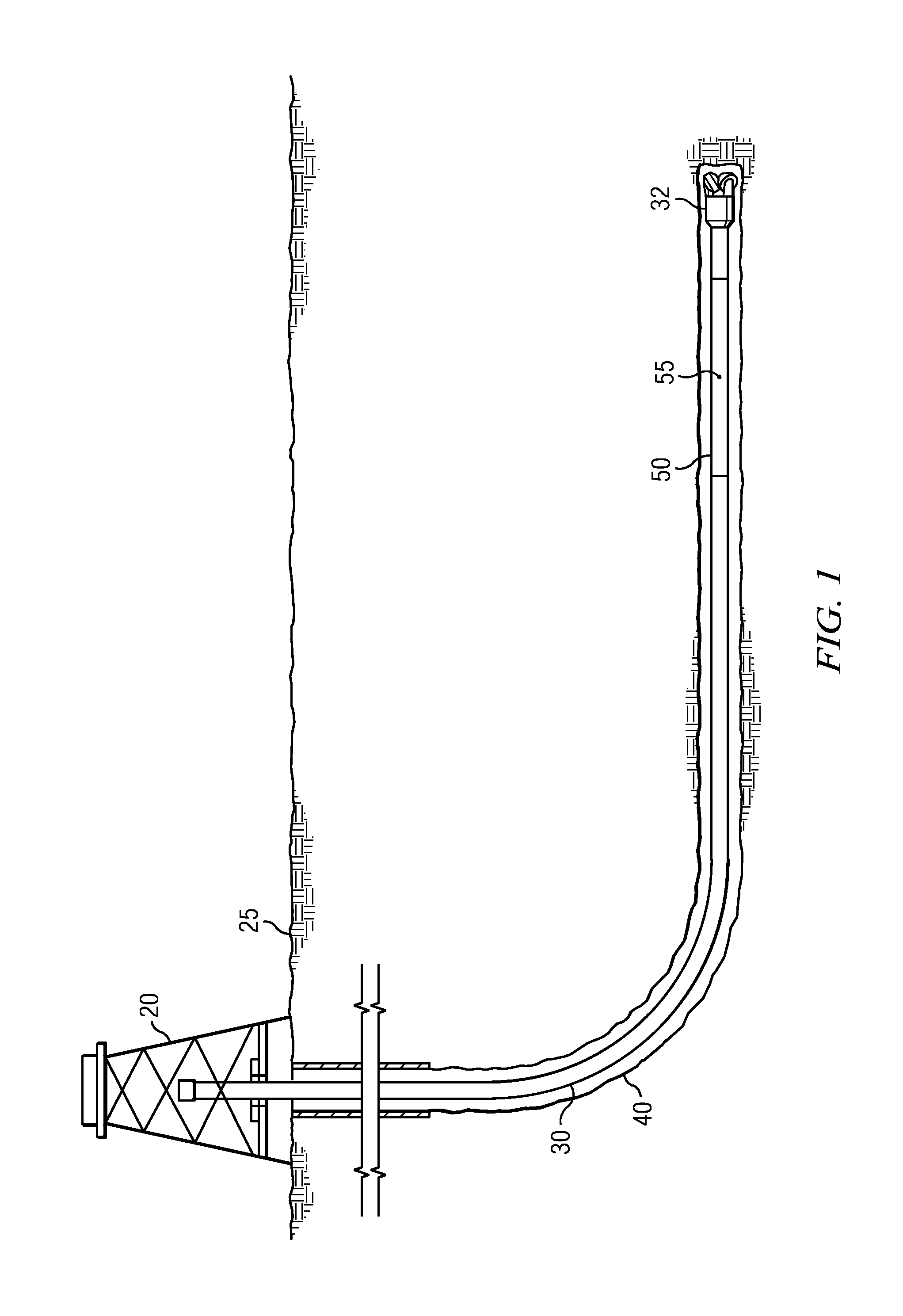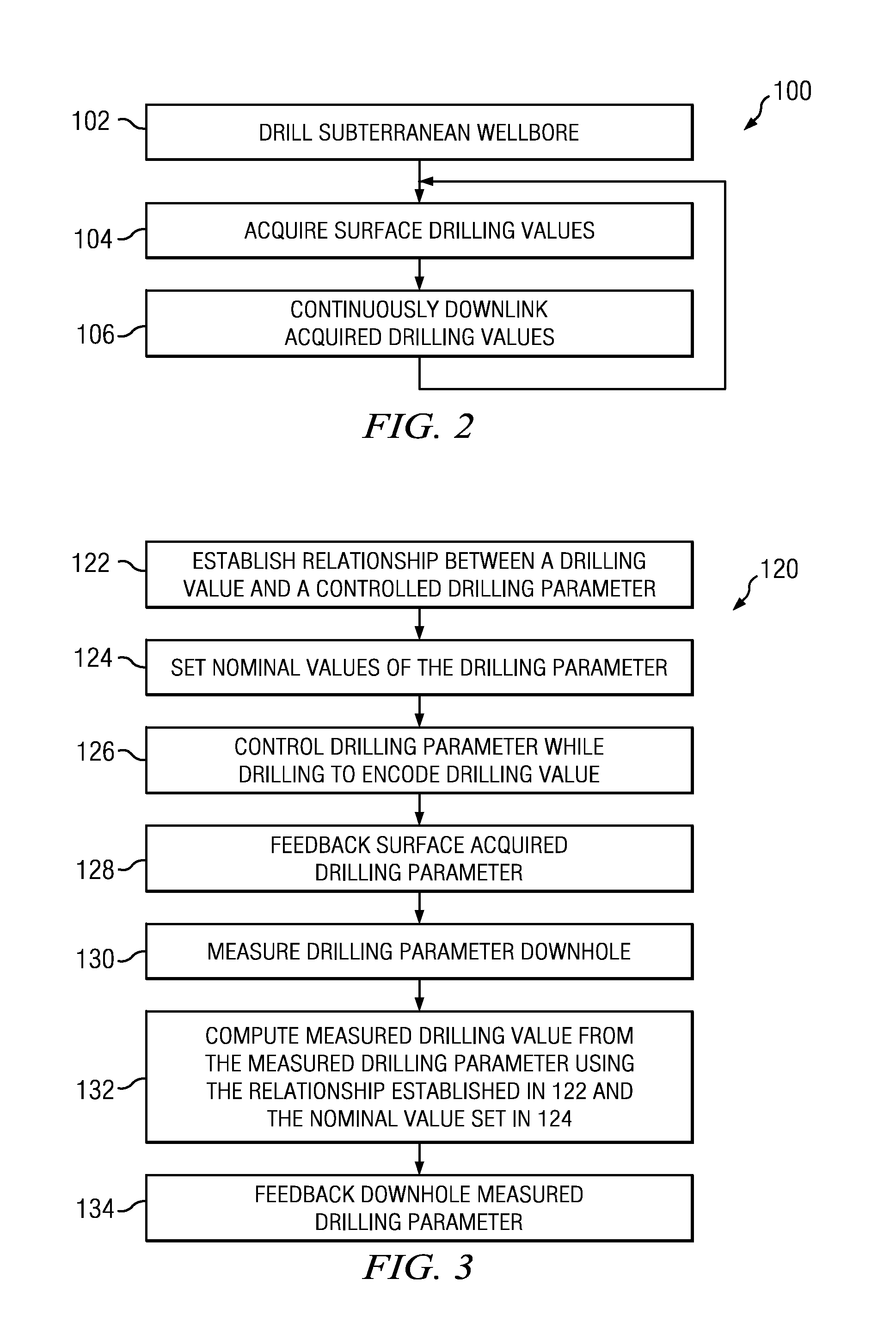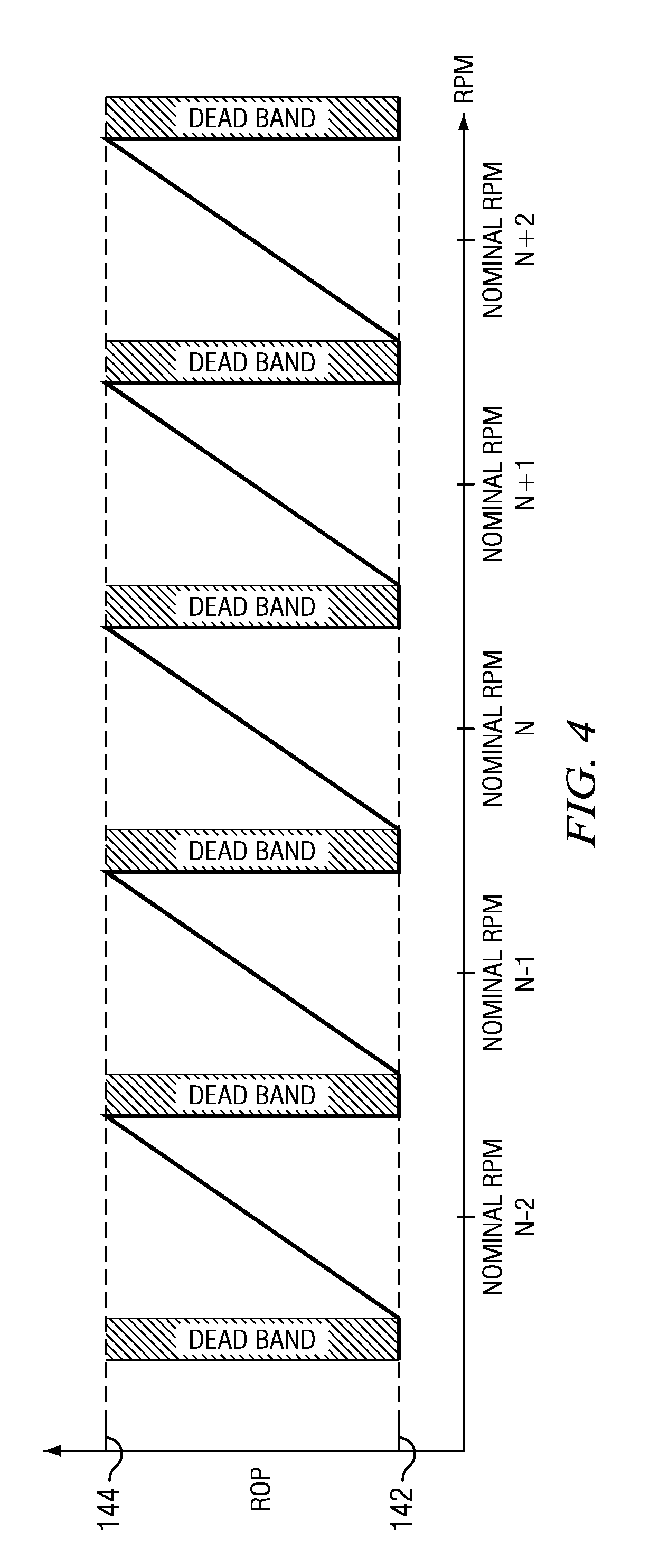Continuous Downlinking While Drilling
a technology of continuous downlinking and drilling, applied in the field of downhole communication, can solve the problems requiring significant changes (modulation), and the known downlinking methods are generally slow, so as to improve the information available, enhance the directional drilling and steering control, and not to the effect of affecting the drilling process
- Summary
- Abstract
- Description
- Claims
- Application Information
AI Technical Summary
Benefits of technology
Problems solved by technology
Method used
Image
Examples
embodiment 100
[0018]FIG. 2 depicts a flow chart of one disclosed method embodiment 100 for continuously downlinking drilling information from the surface to a downhole tool. A drill string (such as drill string 30 depicted on FIG. 1) is deployed in and used to drill a subterranean wellbore at 102, for example, via rotating the drill string and / or pumping drilling fluid downhole to power a mud motor. One or more drilling values are continuously acquired (e.g., measured, derived, or otherwise received) at the surface at 104 while drilling. The acquired drilling values may include, for example, weight on bit, rate of penetration, applied torque, measured depth, and the like. One or more of the acquired drilling values are downlinked from the surface to a downhole tool (or controller) at 106. The acquiring and downlinking are continuously repeated such that the acquired values are continuously downlinked (as depicted). By continuously acquired and continuously downlinked it is meant that the drilling...
embodiment 120
[0019]FIG. 3 depicts a flow chart of another disclosed method embodiment 120. At 122 a relationship is established between an input signal (e.g., the acquired drilling value) to be downlinked and a drilling parameter to be varied at the surface. The establishing relationship defines the drilling value as a repeating (e.g., a periodic) function of the drilling parameter. At 124 a nominal value of the drilling parameter is selected (set) based upon the details of the drilling operation and the drilling process being utilized. The nominal value may be, for example, the midpoint of a selected period of the established repeating function. The nominal value may be encoded at the surface prior to beginning the drilling operation or may be downlinked using conventional downlinking methods. While drilling the drilling parameter is controlled at 126 to encode the acquired drilling value based upon the relationship established in 122. The controlled drilling parameter may be measured at the su...
embodiment 160
[0027]FIG. 5 depicts a block diagram of still another example method embodiment 160 for continuously downlinking a drilling value such as ROP. In the depicted embodiment, steps that are performed uphole are indicated at 162 while steps performed downhole are indicated at 164. Method 160 is similar to method 120 in that a mathematical relationship is established between the ROP and ΔRPM at 166 (in which ΔRPM represents the deviation from the nominal RPM). The disclosed embodiments are not limited to ROP vs. RPM as described above. The desired RPM for the drilling operation is input into a nominal RPM planner at 168 to obtain a nominal RPM. The measured ROP may be filtered (e.g., time averaged) and input into downhole and surface loop ROP controllers at 170 and 172. The outputs may be summed (or averaged) at 174 and received at 166. The ΔRPM computed at 166 is combined (e.g., added) with the nominal RPM at 176 to obtain a controlled RPM for the top drive 178. The actual top drive rota...
PUM
 Login to View More
Login to View More Abstract
Description
Claims
Application Information
 Login to View More
Login to View More - R&D
- Intellectual Property
- Life Sciences
- Materials
- Tech Scout
- Unparalleled Data Quality
- Higher Quality Content
- 60% Fewer Hallucinations
Browse by: Latest US Patents, China's latest patents, Technical Efficacy Thesaurus, Application Domain, Technology Topic, Popular Technical Reports.
© 2025 PatSnap. All rights reserved.Legal|Privacy policy|Modern Slavery Act Transparency Statement|Sitemap|About US| Contact US: help@patsnap.com



